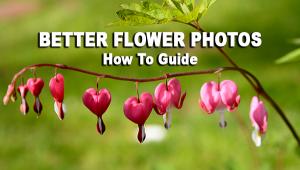A Precise Way to Convert Color Photos to B&W—with Mistakes to Avoid (VIDEO)

Back in the heyday of 35mm photography the task of developing film and making prints in the darkroom required good craftsmanship and plenty of knowledge. In today's digital era, despite all of the sophisticated image-processing tools at our disposal, the same requisites apply.
The quick tutorial below from German pro Rainer Hoffman is devoted to a single, popular topic; namely the best way to convert color images to b&w. After all, some scenes simply have more impact when rendered in monochrome.
Hoffman is a long-time professional photographer, author, and photo educator who often takes a unique and sometime controversial approach with the shooting and editing tutorials he posts. He says, he's passionate about b&w photography and how stripping color from an image can often result in a more compelling "rendition of reality."

In this episode he explains the method that works best for him, beginning with a few common practices he suggests you avoid at all costs. One warning he has for photographers interested n creating b&w imagery is pretty emphatic: "Don't use your camera's black-and-white setting to capture the photos."
He explains that shooting with in-camera monochrome settings gives you "very limited control over how colors are converted into gray values." Some cameras merely include classic b&w filters, namely yellow, orange, red, and green, while others provide a number of b&w film emulation modes. In either case, Hoffman insists there's a better way; namely, making the conversion during the image-editing process.
Next on the list is a mistake that occurs during post-processing and it comes with another blunt warning: If you're looking for great results, don’t take the easy way out and by simply reducing saturation or using a Grayscale mode. Here he provides interesting graphics to illustrate the problems with this approach.

With the "don'ts" out of the way Hoffman moves on to important "dos"—which is what you really want to know, and the final six minutes of this episode is devoted to a detailed demonstration of how these editing techniques work. After watching the video pull up a few color images you shot in the past and apply your new-found knowledge to make high-quality conversions. You'll be impressed by what you're quickly able to accomplish.
The nice thing about this method is that it affords you plenty of control for achieving the specific look you prefer. Hoffman's instructional YouTube channel is full of helpful lessons like this one, so be sure to pay a visit when you have time.
And when it comes to dynamic color photography we suggest watching the tutorial we posted recently, with another pro's technique for editing sunset and sunrise photos in Lightroom for maximum impact—with several powerful free presets to speed up the process.
- Log in or register to post comments









































